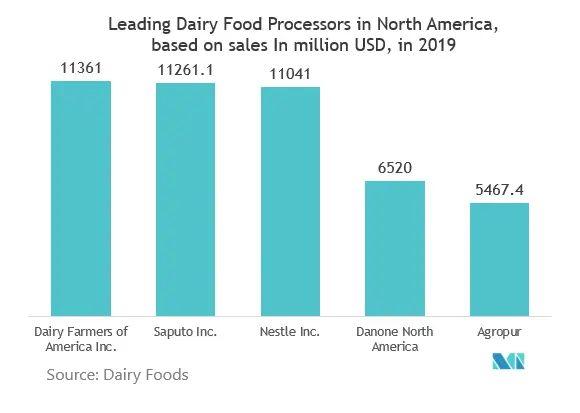Market Trends of North America Dairy Packaging Industry
This section covers the major market trends shaping the North America Dairy Packaging Market according to our research experts:
Paper and Paperboard to Show Significant Growth
- Cardboard is considered to be the most suitable packaging material for dairy products after plastics. The most prevalent type of cardboard used for the packaging of dairy products is the whiteboard. It is suitable for wide range of products such as frozen desserts, milk, or butter as it is coated with wax or plastic that makes the cardboard heat sealable.
- Paper and paperboard packaging is the fastest growing segment of the US dairy packaging market. Paper, timber, pulp, and other similar forest products, which can be easily recycled, are used as primary raw materials for paper packaging.
- Moreover, in the United States, eco-friendly packaging is one of the primary purchasing factors, and draws a considerable attention from manufacturers to and customers. Eco-friendly variants, such as paper and paper board, are being used extensively for dairy packaging, especially liquid dairy products, such as milk, drinkable yogurt, and flavored milk.
- Further, with the advent of bio-degradable solutions, paper and paperboard packaging is growing strong in the US market. In fact, over the forecast period, it is expected to stand as a strong rival to the plastic solutions. The technology of composite packaging is further expected to aid the growth of paperboard packaging over the forecast period.

Cultured Products to Hold the Highest Market Share
- Cultured products included in the scope of the study are yogurt, sour cream, cottage cheese, and dips. Yogurt sales have experienced an increase in a very long time.
- Nevertheless, with the advent of flavored yogurts, the product is expected to sustain its demand in North America over the forecast period. Most of the people consider yogurt as a healthy substitute for ice creams. In America, it is estimated that more than 80% of the population between the age of 18 to 35 prefer frozen yogurt as a close substitute to ice creams.
- Moreover, with the packaging innovations in North America, such as aseptic packaging technology, yogurts are increasingly becoming safe and fresh from fill through final dispensing. Bag-in-box and pouches protect quality, extend freshness, and reduce waste. With aseptic technology, yogurt products have become more shelf-stable and preservative-free.
- For instance, Amcor produces the MiGurt, the pourable, multi-serve aseptic product packaged in a 750-g barrier PET bottle. This helps to provide an extended shelf life of six months to the yogurt and requires no refrigeration before opening.
- Several trends are gaining traction within the cultured dairy segment, specifically with yogurt. Manufacturers are benefiting from the clean eating movement, as cultured products that are functional, grass-fed, whole milk, and lower in sugar are becoming more popular.


